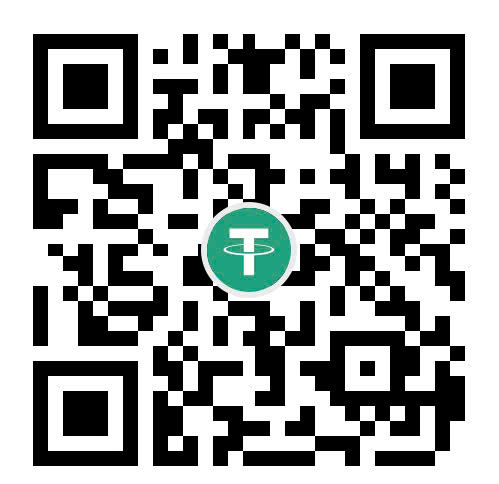What is Blockchain Technology?
Blockchain technology is an advanced database mechanism that enables transparent information sharing within a business network. Blockchain databases store data in blocks that are linked together in a chain. The data is chronologically consistent because you cannot delete or modify the chain without consensus from the network. Therefore, you can use blockchain technology to create an immutable and unchangeable ledger to track orders, payments, accounts, and other transactions. The system has built-in mechanisms to prevent unauthorized transaction entries and create consistency in the overall view of these transactions.

Why is blockchain important?
Traditional database technologies pose many challenges when recording financial transactions. For example, consider the sale of an asset. Once the money is paid, ownership of the asset is transferred to the buyer. Both the buyer and seller can each record monetary transactions, but neither source is trustworthy. A seller can easily claim that they have not received the money even if they have, and a buyer can also dispute that they have transferred the money even if they have not paid.
To avoid potential legal issues, a trusted third party is needed to monitor and validate transactions. The presence of this central authority not only complicates the transaction but also creates a vulnerability. If the central database is compromised, both parties can suffer.
Blockchain mitigates such issues by creating a tamper-proof, decentralized system for recording transactions. In the case of asset transactions, the buyer and seller are each given a separate ledger by the blockchain. All transactions must be approved by both parties and are automatically updated in both ledgers in real time. Any errors in previous transactions will corrupt the entire ledger. These properties of blockchain technology have led to its use in a variety of fields, including the creation of digital currencies like Bitcoin.

How are different industries using blockchain?
Blockchain is an emerging technology that is being applied in innovative ways by different industries. Below, we describe some of the use cases in different industries:
Energy
Energy companies use blockchain technology to create peer-to-peer energy trading platforms and streamline access to renewable energy. For example, consider the following use cases:
Blockchain-based energy companies have created a trading platform for individuals to buy and sell electricity. Homeowners with solar panels use the platform to sell their excess solar energy to their neighbors. This process is largely automated: smart meters generate transactions and blockchain records them.
With blockchain-based crowdfunding initiatives, users can fund and own solar panels in communities that do not have access to energy. Funders can also receive rent from these communities after they have built the solar panels.
Finance
Traditional financial systems, such as banks and stock exchanges, use blockchain services to manage online payments, accounts, and market transactions. For example, Singapore Exchange Limited, an investment holding company that provides financial trading services across Asia, uses blockchain technology to build a more efficient interbank settlement account. By applying blockchain, they have solved many challenges, including batch processing and manual reconciliation of thousands of financial transactions.
Media and Entertainment
Companies in the media and entertainment industry use blockchain systems to manage copyright data. Copyright verification is essential for artists to receive fair compensation. Many transactions are needed to record the sale or transfer of copyrighted content. Sony Music Entertainment Japan uses blockchain services to manage digital rights more efficiently. They have successfully used blockchain strategies to improve productivity and reduce copyright processing costs.
Retail
Retail companies use blockchain to track the movement of goods between suppliers and buyers. For example, retail company Amazon has filed a patent for a distributed ledger technology system that would use blockchain technology to verify that all goods sold on the platform are authentic. Amazon sellers can map their global supply chains by allowing participants such as manufacturers, shippers, distributors, end users, and secondary users to add events to the ledger after registering with a certification authority.

What are the characteristics of blockchain technology?
Blockchain technology has the following main characteristics:
Decentralization
Decentralization in blockchain refers to the transfer of control and decision-making from a centralized entity (individual, organization, or group) to a distributed network. Decentralized blockchain networks use transparency to reduce the need for trust between participants. They also prevent participants from exercising power or control over each other in ways that undermine the network's functionality.
Immutability
Immutability means that something cannot be changed or altered. No participant can tamper with a transaction once someone has recorded it on a shared ledger. If a transaction record contains an error, a new transaction must be added to compensate for the error, and both transactions are reflected in the network.
Consensus
A blockchain system establishes rules for the consensus of participants that allow transactions to be recorded. New transactions can only be recorded if a majority of network participants agree.
What are the main components of blockchain technology?
A blockchain architecture has the following main components:
Distributed Ledger
A distributed ledger is a shared database within a blockchain network that stores transactions, such as a shared file that everyone on the team can edit. In most shared text editors, anyone with editing permissions can delete the entire file. However, distributed ledger technology has strict rules about who can edit and how. You cannot delete entries once they have been recorded.
Smart Contracts
Companies use smart contracts to manage business contracts themselves without the help of a third party. These are programs stored on the blockchain that automatically run when predefined conditions are met. They run if-then condition checks so that transactions can be completed reliably. For example, a logistics company could set up a smart contract that automatically pays when goods arrive at the port.
Public-key cryptography
Public-key cryptography is a security feature that uniquely identifies participants in a blockchain network. It creates two sets of keys for members of the network. One key is a public key that everyone in the network shares. The other key is a private key that is unique to each member. The private and public keys work together to unlock data in the ledger.
For example, John and Jill are two members of the network. John records an encrypted transaction using his private key. Jill can decrypt the transaction using her public key. This way, Jill can be confident that John made the transaction. Jill’s public key will not work if John’s private key is tampered with.

How does a blockchain work?
While the underlying blockchain mechanisms are complex, we will provide a brief overview in the following steps. Blockchain software can automate most of these steps:
Step 1 – Recording the Transaction
A blockchain transaction represents the movement of physical or digital assets from one party to another on the blockchain network. The transaction is recorded as a block of data and can include details such as:
Who was involved in the transaction?
What happened during the transaction?
When did the transaction occur?
Where did the transaction occur?
What was the reason for the transaction?
How much of the asset was exchanged?
How many preconditions were met during the transaction?
Step 2 – Reaching Consensus
Most participants on a distributed blockchain network must agree that the recorded transaction is valid. Depending on the type of network, the agreement rules may vary but are usually established at the start of the network.
Step 3 – Linking Blocks
Once the participants have reached consensus, the transactions on the blockchain are written into blocks, which are the equivalent of pages in a ledger. Along with the transactions, a cryptographic hash is also added to the new block. The hash acts as a chain that links the blocks together. If the contents of the block are intentionally or unintentionally modified, the hash value will change, providing a way to detect tampering with the data.
The blocks and chain are thus securely linked and cannot be edited. Each added block strengthens the verification of the previous block and thus strengthens the entire blockchain. This is like stacking blocks of wood to form a tower. You can only stack blocks on top, and if you remove a block from the middle of the tower, the whole tower will collapse.
Step 4 – Share the Ledger
The system distributes the latest copy of the central ledger to all participants.
What types of blockchain networks are there?
There are four main types of decentralized or distributed blockchain networks:
Public blockchain networks





